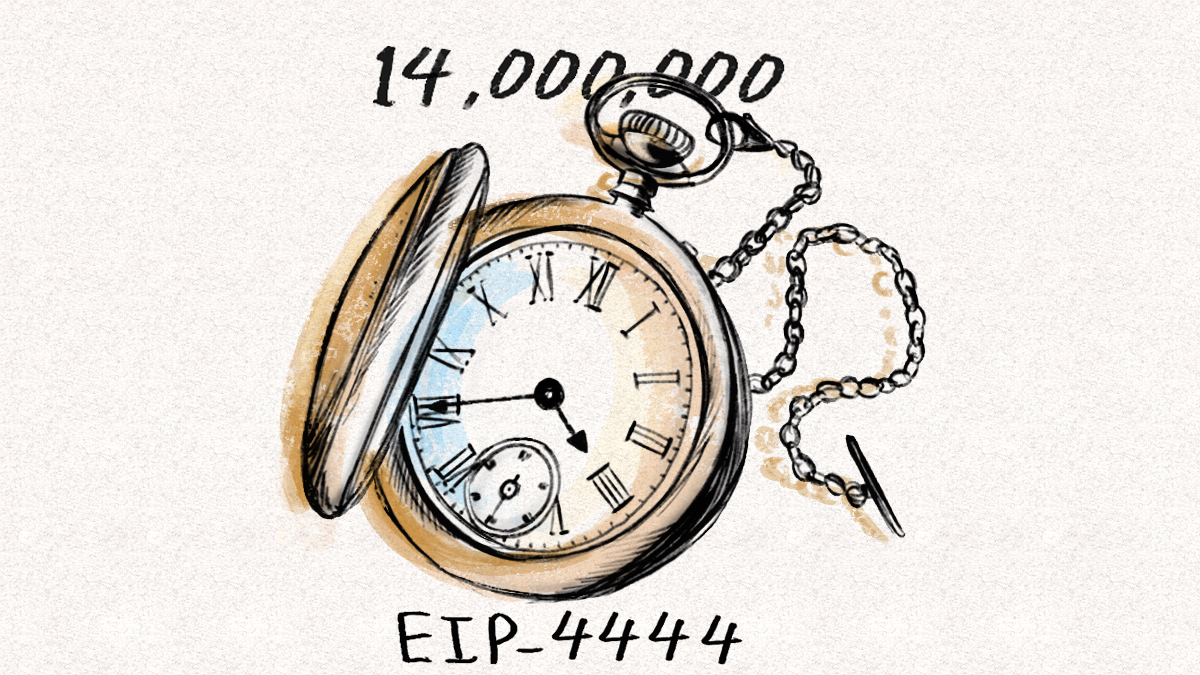Thread
Today Ethereum hits block 14,000,000! On this milestone, I want to share this thread explaining why today’s blockchains need to change the way they relate to the availability of their chain-history data.
…
…
A blockchain is an append-only structure. As I worked on client development, I saw the chain extend by millions of blocks over the years, increasing our software’s disk usage.
…
…
Since the default is to serve as much of this chain-history data as possible, taking this stance indefinitely poses an insidious risk to all blockchains.
…
…
Either the set of node operators shrinks due to increasing disk requirements, or they continue to validate the chain without serving chain-history data over the p2p network.
…
…
The most likely case is that they will stop serving the chain-history data. As this happens, people will quickly learn that they must get this data through some other means than the blockchain’s native p2p network.
…
…
The ad-hoc solutions that will arise to solve this problem will likely be suboptimal and the shift to those solutions will be chaotic.
…
…
If this is the future, we ought to get ahead of it – design a way to create easily verifiable, replicable chain-history artifacts that conform to a standard designed to have useful properties.
…
…
In fact, this is a description of the work in the Ethereum ecosystem surrounding EIP-4444 (#fourfours) by @asn_d6, @lightclients, and @ralexstokes!
eips.ethereum.org/EIPS/eip-4444
…
eips.ethereum.org/EIPS/eip-4444
…
The EIP itself simply says that history older than an offset from today will no longer be served over the native p2p network. But switching it off is the easy part and also the very last step in the process.
…
…
There’s a lot of engineering work to be done (currently by @henridf and some folks over at @optimismPBC) between now and then to make sure we can generate and verify the chain-history artifact.
…
…
We also want the artifacts to have cool features like merklization which allows for easily proving that a piece of data is part of the artifact.
…
…
Longer term, we have even fancier ways to serve data, like #PortalNetwork (@pipermerriam is the guy to ask if you’re curious about that).
…
…
EIP-4444 has other facets and common objections I’ll address another time but for now, I want to provide a little more context for the family of problems of which chain growth is a part.
…
…
Blockchain resource requirements in general will keep growing and threatening decentralization unless we find elegant solutions. Luckily, Ethereum has a clear roadmap to solve this and other problems.
…
…
For example, if you want to know more about efforts to minimize the resources required of nodes to fully verify new blocks, here’s an incomplete list of some people who will be pretty great to ask on all things stateless/verkle tries: @dankrad, @gballet, @adietrichs
Here's to 14,000,000 and many more 🥂
etherscan.io/block/countdown/14000000
etherscan.io/block/countdown/14000000
